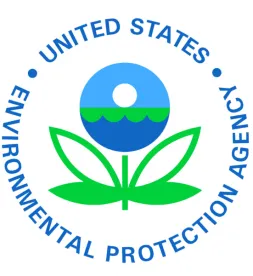On May 30, 2019, the U.S. Environmental Protection Agency (EPA) issued a final memorandum on fine particulate matter (PM2.5) precursor demonstration guidance. Memorandum from Scott Mathias, Acting Director, EPA Air Quality Division and Richard Wayland, Director, EPA Air Quality Assessment Division, to EPA Regional Air Division Directors, "Fine Particular Matter (PM2.5) Precursor Demonstration Guidance, " (May 30, 2019) (Memorandum with attached Guidance). The purpose of the Guidance is to assist state, local, and tribal air agencies to develop optional PM2.5precursor demonstrations as authorized by the PM2.5 State Implementation Plan (SIP) Requirements Rule (PM2.5 SIP Requirements Rule) (81 Fed. Reg. 58009). Guidance at 1.
The PM2.5 SIP Requirements Rule mandated that the air agencies take precursor impacts into account in their SIPs for attaining any PM2.5 National Ambient Air Quality Standards (NAAQS) and their Nonattainment New Source Review (NNSR) permit programs for areas out of attainment with the standards. Id. The rule identifies the PM2.5 precursor pollutants that must be evaluated in the development of all PM2.5 nonattainment area SIPS, and they include sulfur dioxide, oxides of nitrogen, volatile organic carbon and ammonia. Id. The rule requires that all PM2.5 precursors be evaluated for potential control measures in any PM2.5 attainment plan or any NNSR program. Id. The rule, however, allows air agencies to submit an optional precursor demonstration designed to show that for a specific PM2.5nonattainment area, emissions of one or more precursors from sources within the nonattainment area do not or would not contribute significantly to PM2.5 levels that exceed the NAAQS in the area. Id. If EPA approves the demonstration, the attainment plan or NNSR program for a particular PM2.5nonattainment area may exclude that precursor from certain control requirements. Further, "the guidance clarifies that EPA does not intend to limit the technical information the air agencies can use in their demonstrations (e.g., air agencies should use the best available information to make decisions on the size and location of 'hypothetical' sources) and recognizes that a nonattainment area which is monitoring clean data may use that information as an additional consideration in a precursor demonstration." Memorandum at 2. Air quality monitors showing "clean data" are those in a nonattainment area where there are no violations of the NAAQS, even though a formal redesignation process is required to convert the area to attainment status. Id.
The Guidance emphasizes that it does not impose "binding, enforceable requirements on any party, nor does it ensure that EPA will approve a precursor demonstration in all instances where the guidance is followed…" Id. Although not a rule, such guidance is routinely challenged in court by parties claiming that such guidance has the effect of a final agency rule. "Final EPA Guidance for States' PM2.5 Air Planning Might Prompt Lawsuits," InsideEPA.com (June 6, 2019). In fact, the final Guidance retains several provisions from the proposed draft that environmentalists claimed were too weak, which might prompt them to file suit over the Guidance. Id. On the other hand, the Guidance responded to claims from states and the petroleum industry that the draft version was too conservative. Id. In response to those concerns, the final version of the Guidance gives states flexibility in departing from those aspects of the Guidance that were alleged to be too conservative. Id.



 />i
/>i

